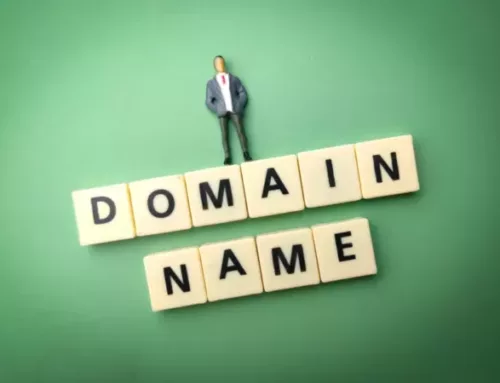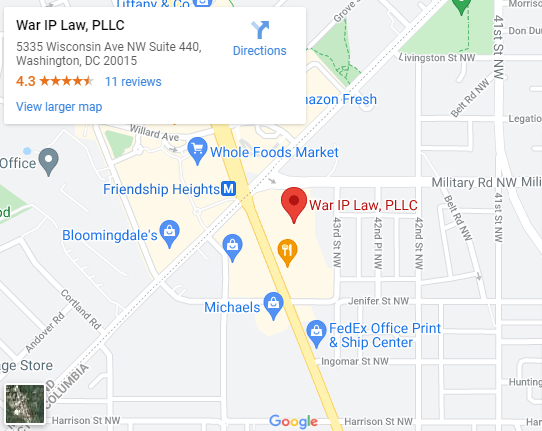In today’s economy, intangible assets play an important role in a company’s success. Intangible assets are unlike their tangible counterparts in that their value may not be immediately apparent as a calculation based on hours of skilled labor, cost of materials, and similar readily quantified variables. However, this does not mean that a valuation of intangible assets can be made solely from guesswork. Rather, it means that determining the precise value of a company’s intangible assets may require specialized methods. An experienced intellectual property attorney can often assist clients with strategies for valuating intangible assets, and if necessary use their professional connections to contract with outside assessors and appraisers who specialize in the area where your intangible assets provide value. To learn more about tangible and intangible assets, please schedule a consultation with War IP Law PLLC, by calling (202) 800-3754.

Why Value Intangible Assets?
There are many advantages for companies that properly value intangible assets. One primary benefit is that an appreciation for the contribution intangible assets make to the overall success of business operations can aid in strategic decision-making by providing insights into how these assets may impact the company’s financial position. Understanding the value of a strong brand can help steer marketing and branding strategies, including decisions about advertising budget and brand-building activities.
Financial Reporting
Accurately valuing intangible assets is crucial for financial reporting purposes, such as:
- Determining fair value for mergers and acquisitions
- Allocating purchase prices between different assets
- Assessing impairment
Valuation is vital to meeting accounting standards and keeping stakeholders, investors, and regulatory bodies informed.
Licensing and Other Business Transactions
Companies can more easily negotiate licensing, franchising, or technology transfer agreements when they can identify the value of their intangible assets. According to the United States Copyright Office, accurate valuation also helps to establish fair royalty rates, licensing fees, and other types of compensation for using intangible assets.
Intellectual Property Protections
Valuing intangibles also aids in identifying and protecting intellectual property rights. By assessing the value of their intellectual assets, companies can prioritize their protection and make informed decisions about patent filings, trademark registrations, and trade secret management. In the event that a business must file suit seeking compensation for damages incurred as a result of intellectual property rights infringement, clear and legally defensible valuation of intangible assets can also help to establish for the court why the amount sought as compensation is fair and reasonable.
What Are Tangible Assets?
Tangible assets are physical items that can be seen, touched, and quantified. They have a physical existence. A few examples common in business contexts include:
- Buildings
- Machinery
- Equipment
- Inventory
On the other hand, intangible assets lack physical substance. They represent rights or privileges that have no physical presence, but whose effects constitute significant value.
What Are Intangible Assets?
According to the American Association of University Professors, intangible assets comprise both intellectual property assets and a range of intangibles not typically eligible for protection under traditional IP laws. Accurate valuation of intangible assets that are not already protected by the robust protections afforded by such legal mechanisms as patent and trademark registration can be especially critical to documenting the assets’ contributions to a company’s total asset portfolio.
Intangible assets cannot be physically touched and often cannot be seen, but they are important to individuals as well as to organizations of many kinds, including commercial enterprises. Despite lacking physical form, these assets hold immense value and significance in a wide array of industries and sectors. They establish brand identity, foster innovation, and drive business success. Some of the most valuable intangible assets are protected under intellectual property laws. A few examples of intangible assets include:
- Patents
- Trademarks
- Copyrights
- Brand names
- Software
These examples demonstrate the diverse nature of intangible assets, highlighting their importance in protecting intellectual property, fostering innovation, building brand value, and enabling businesses to gain a competitive edge in the market. If you would like to learn more about valuing intangible assets, please reach out to War IP Law PLLC.
What Are the Methods for Valuing Intangible Assets?
There are several methods for valuing intangible assets. Five that are especially widespread thanks to their effectiveness in a wide range of use cases include:
Cost Approach
The cost approach is a standard method used to value intangible assets by determining the cost required to recreate or replace them. The process considers the expenses incurred in developing, acquiring, or maintaining the assets. One common use case is in the valuation of software development. A company employing the cost approach would estimate all the expenses associated with designing, coding, and testing the software.
Businesses typically also need to factor in research and development costs, legal fees, licensing expenses, and any other relevant costs incurred in creating the intangible asset. The cost approach provides a solid foundation for valuing intangibles, especially when limited market transactions or financial data are available for comparison.
Market Approach
Another approach is market-based, comparing intangible assets to similar ones sold in the market. This approach relies on transactions and market data regarding similar intangibles in the same general category to value the assets. To estimate the value of a company’s trademark, the market approach would typically check the sales prices of similar trademarks in the same industry.
Market-based methods, including benchmarking and the use of royalty rates, can provide valuable insights into the value of intangibles concerning market demand and competition. However, this approach is heavily dependent on the availability of market data and comparable transactions to ensure accurate valuations.
Income Approach
The income approach is based on the future economic benefits that an intangible asset is expected to generate. This method assesses the asset’s value by estimating the income or cash flows attributable to it, both concurrently and over time. This approach often involves forecasting the asset’s future financial performance and discounting those projected cash flows to their present value.
The income approach is frequently used when valuing assets like patents, copyrights, and customer lists. This approach considers revenue streams, profit margins, and growth potential associated with the asset since the income generated from utilizing the asset is a significant factor in determining its value.
Qualitative Assessments
In addition to quantitative methods, qualitative assessments play a vital role in valuing intangible assets. These assessments involve subjective evaluations based on expert opinions, market research, and other qualitative factors. Qualitative assessments are often used when gauging the value of a brand because this approach can take into consideration factors that may themselves be intangible but that affect a company’s future potential, such as brand recognition, customer loyalty, market position, and reputation. Qualitative assessments provide a view of the intangible asset’s value beyond financial metrics, helping to capture the social and relational factors that influence its contributions to a company’s current value and potential for future growth.
Hybrid Approaches
In certain cases, a combination of multiple valuation methods may be necessary to determine the value of intangible assets accurately. These hybrid approaches use the strengths of different methods to mitigate their limitations and provide a more comprehensive valuation than any one approach could provide alone. One example of a hybrid method would be combining the income approach with qualitative assessments to value a software product. This combination can help companies to get a better picture of how qualitative factors contribute to a product’s potential for income generation, and as a result allows for a more well-rounded valuation incorporating both financial projections and subjective evaluations.
Valuing intangible assets is not a one-size-fits-all process. The specific method or combination of approaches will depend on a variety of factors, including the type of intangible asset, the norms of the relevant industry, the data available for assessment, and the valuation’s purpose.
Reach Out to an Intellectual Property Attorney Today
In today’s business world, valuing intangible assets is crucial to staying competitive. Evaluating these assets is essential for businesses seeking accurate information with which to make informed decisions, plan strategically, and maximize the benefits offered by their full asset portfolio. By using proper methods and seeking expert guidance where appropriate, companies can determine the worth and potential of their intangible assets, leading to better decision-making in our current economy. To learn how an experienced intellectual property attorney can help you with valuing intangible assets and protecting their contributions to your business, call War IP Law PLLC today (202) 800-3754 and schedule a consultation to discuss a tailored approach to your organization’s specific needs.






